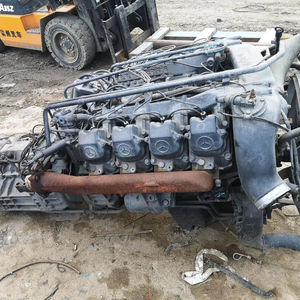Comprehensive Testimonial of a Subcompact Automobile's Powertrain Capabilities
In the realm of automobile engineering, the powertrain of a subcompact automobile stands as an essential nexus where performance, efficiency, and technology assemble. When inspecting the intricate internet of elements that push these cars forward, one discovers a harmony of design wonders waiting to be explored. From the engine's relentless search of optimal performance to the transmission's smooth choreography of power circulation, every element plays an essential duty in defining the overall driving experience. However, past the surface exists a chest of insights waiting to be discovered, guaranteeing a much deeper understanding of exactly how these powertrains really make out in the world of useful application.
Engine Efficiency Analysis
In analyzing the engine efficiency of the subcompact car, an extensive analysis reveals its effectiveness and power result under various driving conditions. The subcompact vehicle's engine, an important element of its powertrain system, shows good performance metrics.
Furthermore, when based on extensive screening situations such as high-speed acceleration or uphill climbs, the engine shows resilience and responsiveness. Its power result stays consistent, giving ample velocity when required. The subcompact vehicle's engine is customized to satisfy the needs of metropolitan driving, where quick acceleration and active maneuverability are crucial.
Moreover, the engine's design incorporates modern-day innovations that boost its performance attributes. Features like turbocharging or variable shutoff timing add to boosted power shipment and torque, boosting the general driving experience. To conclude, the engine performance of the subcompact cars and truck emphasizes its ability to deliver trusted and effective power output across various driving conditions.
Transmission Performance Evaluation
Examining the subcompact auto's transmission performance involves assessing its efficiency in transmitting power seamlessly across various driving problems. The effectiveness of a transmission system is vital as it directly influences the general performance and gas economic climate of the car.
One typical approach utilized to assess transmission performance is via dynamometer screening, where the power outcome from the engine is measured at the input and outcome shafts of the transmission. Inconsistencies in between input and output power can suggest the degree of efficiency of the transmission system. In addition, real-world driving tests are performed to assess how the transmission does in sensible circumstances. By analyzing these aspects, designers can recognize areas for enhancement and maximize the transmission system for much better general efficiency and efficiency.
Gas Performance Evaluation
The analysis of the subcompact cars and truck's gas efficiency includes a comprehensive analysis of its usage rates under different driving conditions. Gas efficiency is an essential factor in examining the general efficiency and cost-effectiveness of a car. By determining the quantity of gas consumed per unit distance traveled, typically revealed as miles per gallon (MPG) or litres per 100 kilometers (L/100 kilometres), the efficiency of the subcompact automobile's powertrain can be figured out.

Additionally, improvements in modern technology, such as crossbreed systems, regenerative stopping, and automated start-stop systems, have considerably boosted gas performance in modern subcompact cars and trucks. Suppliers continue to optimize and introduce powertrain parts to improve gas performance while satisfying performance demands and ecological guidelines. Assessing a subcompact car's gas performance offers valuable understandings for consumers looking for lasting and economical transportation remedies.
Acceleration and Handling Analysis
An essential facet of evaluating the efficiency abilities of a subcompact car depends on analyzing its acceleration and managing characteristics. Velocity is important as it establishes exactly how quickly the automobile can reach preferred rates, affecting general driving experience and maneuverability in numerous traffic problems. opel corsa engine. Subcompact cars are commonly favored for their nimbleness and agility, making velocity from dead stop and during overtaking maneuvers necessary factors to take into consideration
When it pertains to taking care of, a subcompact car's capability to navigate corners, keep security at broadband, and offer a receptive guiding feeling are extremely important. Limited city roads and winding roads need precise taking care of to guarantee vehicle driver confidence and security. Aspects such as suspension tuning, weight circulation, and tire grasp play significant roles in identifying a subcompact cars and truck's overall handling expertise.

Powertrain Parts Introduction
Upon diving right into the complexities of a subcompact car's efficiency, a comprehensive exam of its powertrain elements is important to realize the lorry's mechanical bases. The powertrain of a subcompact vehicle typically is composed of the engine, transmission, driveshaft, differential, and axles. Recognizing just how these elements work with each other is important in assessing a subcompact auto's general efficiency, effectiveness, and driving dynamics.
Final Thought
To conclude, the subcompact automobile's powertrain capacities have actually been extensively examined in terms of engine efficiency, transmission effectiveness, gas handling, effectiveness, go to my site and acceleration. The detailed review highlights the value of each component collaborating seamlessly to provide ideal efficiency. Overall, the powertrain elements of the subcompact automobile have actually been located to be well-balanced and efficient, making it a dependable choice for motorists looking for a portable and fuel-efficient vehicle.
In the realm of automotive engineering, the powertrain of a subcompact cars and truck stands as an essential nexus where advancement, effectiveness, and efficiency assemble.In examining the engine efficiency of the subcompact cars and truck, a comprehensive analysis reveals its efficiency and power output under numerous driving conditions.Assessing the subcompact vehicle's transmission efficiency entails assessing its efficiency in transferring power perfectly throughout different driving conditions. Understanding exactly how these components function together is crucial in analyzing a subcompact auto's general performance, efficiency, and driving characteristics.In final thought, the subcompact automobile's powertrain capabilities have actually been completely evaluated in terms of engine performance, transmission performance, gas efficiency, velocity, and handling.